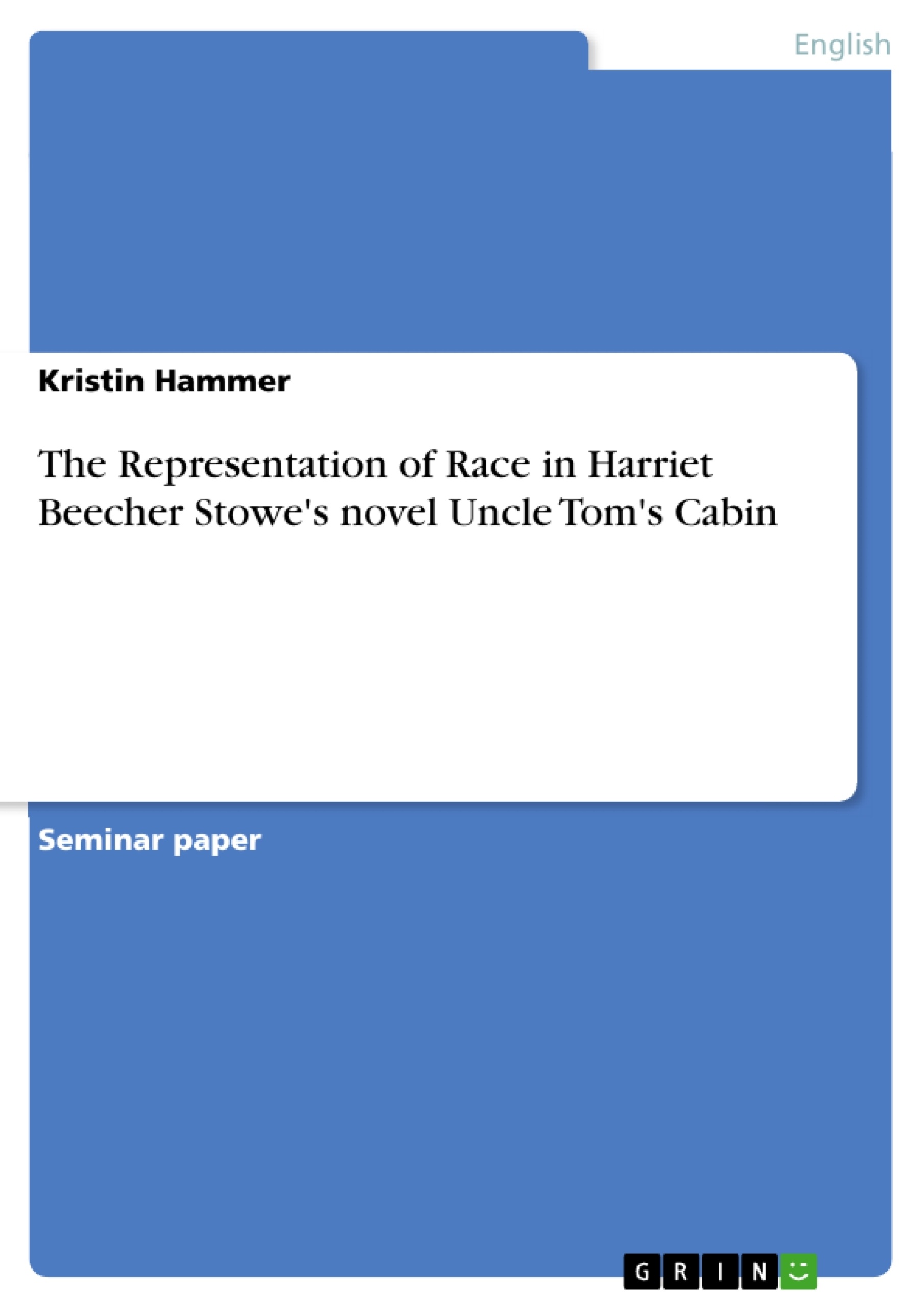Harriet Beecher Stowe's novel Uncle Tom's Cabin, which was first published in book form in 1852, is a work with a unique history of reception. In the nineteenth century it sold more copies than any book in the world except the Bible and became "the most cussed and discussed book of its time" 1. While in the 1850s slavery opponents hailed Stowe's novel as "the greatest weapon ever brought to bear in the abolitionist battle" 2, it was a hundred years later exposed to immense criticism, especially on the part of the blacks. Like Edmund Wilson reports, "it was still possible at the beginning of this century for a South Carolina teacher to make his pupils hold up their right hands and swear that they would never read Uncle Tom" 3. This research paper is intended to focus on why the reactions to this novel were so contradictory. After going into the general ideas of ‘race’ at Stowe's time, it will give an account of which attitudes towards this topic the writer herself expresses in Uncle Tom's Cabin and how these reply to the view of her contemporaries. This leads to the question whether one might, as it has often been the case, reproach Stowe for being a racist and whether her novel should still be discussed in today's classroom. 1 Langston Huges, quoted in Richard Yarborough, “Strategies of Black Characterization in Uncle Tom’s Cabin and the Early Afro-American Novel,“ New Essays on Uncle Tom’s Cabin, ed. Eric. J. Sundquist (Cambridge, 1986), 57. 2 Yarborough, 68 3 Yarborough, 66
Table of Contents
- I. Introduction
- II. The idea of 'race' in the nineteenth century
- II.1. The idea of 'race' in the nineteenth century
- II.2. Race attitudes in Uncle Tom's Cabin
- II.2.a. Harriet Beecher Stowe as a racist?
- II.2.b. Stowe and the idea of colonization
- III. Conclusion
Objectives and Key Themes
This research paper aims to explore the contradictory reactions to Harriet Beecher Stowe's novel Uncle Tom's Cabin. It delves into the prevailing understanding of 'race' in the 19th century, examining how Stowe's own attitudes toward race are reflected in the novel. The paper also analyzes the relationship between these attitudes and those of Stowe's contemporaries, and investigates whether Stowe can be accused of racism. Ultimately, the paper considers the relevance of Uncle Tom's Cabin for contemporary discussions.
- The evolving concept of 'race' in the 19th century
- Harriet Beecher Stowe's portrayal of race in Uncle Tom's Cabin
- Stowe's potential racism and its context
- The reception and legacy of Uncle Tom's Cabin
- The relevance of Uncle Tom's Cabin to contemporary discussions
Chapter Summaries
- I. Introduction: The introduction contextualizes Uncle Tom's Cabin by discussing its unique history of reception. It highlights the novel's immense popularity in the 19th century, as well as the subsequent criticism it faced. The introduction also outlines the research paper's objectives and key themes.
- II.1. The idea of 'race' in the nineteenth century: This section examines the understanding of 'race' prevalent in the 19th century, emphasizing the shift towards a biological perspective. It discusses how racial differences were perceived as heritable characteristics that determined one's moral and intellectual capabilities. The chapter concludes by highlighting the scientific flaws and social impact of this view.
Keywords
The paper focuses on the concepts of 'race' and its representation in literature, specifically within the context of 19th-century America. Key themes include the evolving understanding of race, its biological determinism, and the historical and cultural factors shaping its interpretation. Additionally, the paper examines the attitudes towards race expressed by Harriet Beecher Stowe in Uncle Tom's Cabin, considering its implications for the novel's reception and its relevance in the present day.
- Arbeit zitieren
- Kristin Hammer (Autor:in), 1997, The Representation of Race in Harriet Beecher Stowe's novel Uncle Tom's Cabin, München, GRIN Verlag, https://www.grin.com/document/29278



